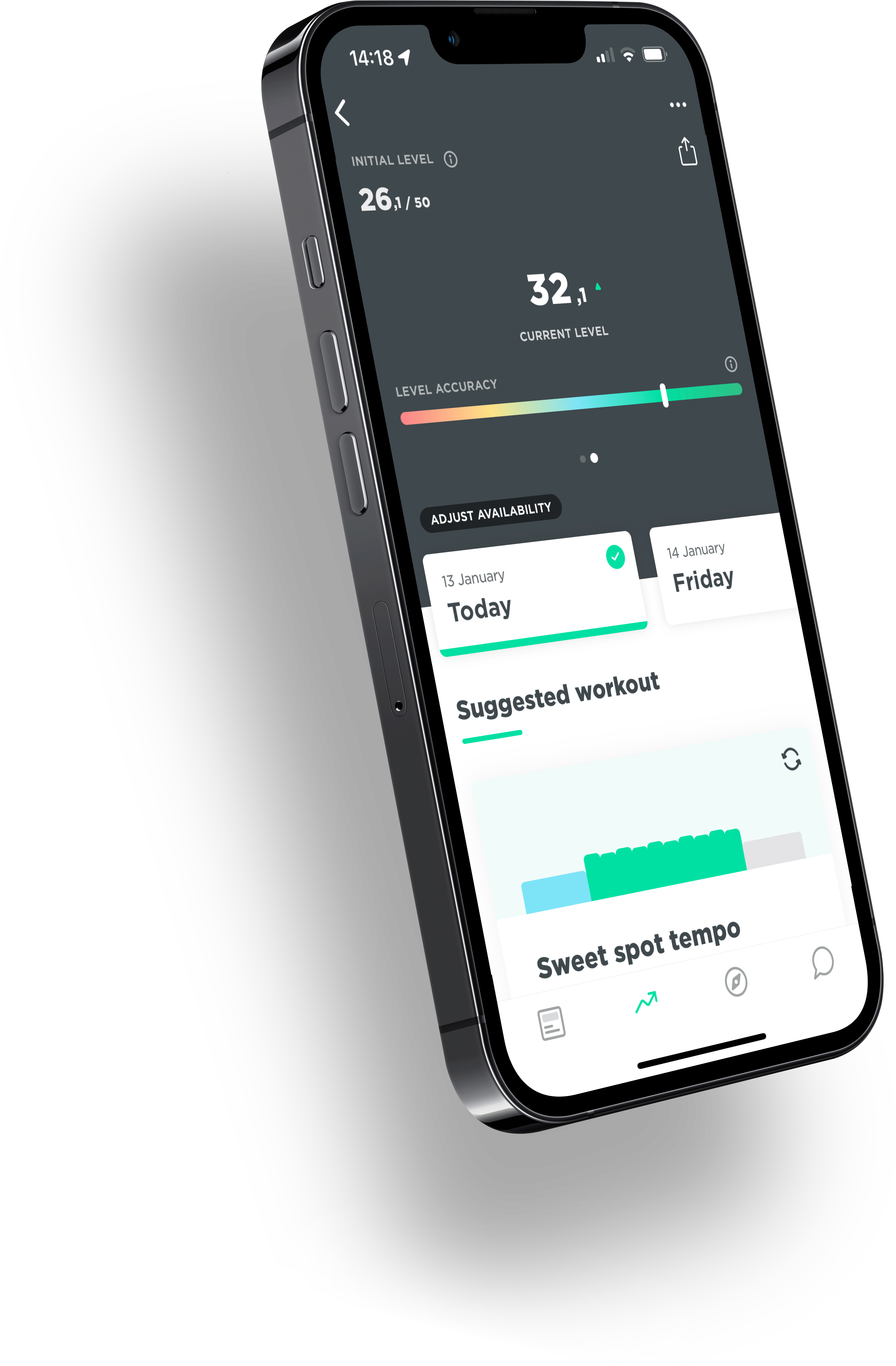A good polarized training plan contains a combination of different types of workouts and will include workouts around the turnover point and interval workouts in addition to gentle endurance training. We call this the 80/20 rule. In addition to consistency, varying your training in both duration, intensity and also overall volume is an important component of “getting better” through polarized training. A schedule where you always do the same thing won’t make you better after about eight weeks. This is because the body has then become accustomed to the training stimulus and no longer improves because of it.
However, in recent years there has been a clear trend in intensity distribution, with top endurance athletes training very hard or very quietly. This 80/20 distribution in the training plan – with almost no training in the gray area in between – is also called polarized training.
80/20 rule for polarized training
The obvious thing to do is train on your Functional Threshold Power (FTP), the power a rider can deliver for an hour. Funnily enough, this does not appear to be the most effective way to train. When looking at how high-level athletes trained, it turns out that these athletes have a particular intensity distribution. Research shows roughly a distribution of 80 percent gentle workouts (endurance training) and 20 percent hard workouts (interval) is a distribution that is very common.
Training around the FTP is thus virtually avoided. The reason is that training around the tipping point mainly causes fatigue, while the stimulus is not strong enough to improve the body of well-trained endurance athletes. By doing the low-intensity workouts more slowly, by the time interval training is scheduled, you will be equipped enough to go to the limit. Interestingly, this typical 80-20 distribution has been found in cyclists as well as other endurance athletes such as runners, swimmers, rowers and cross-country skiers.
So it seems that a polarized way of training is more effective than an 80/20 training plane that involved a lot of training around the tipping point. A training distribution where 80 percent of the time is gentle and 20 percent of the time is very heavy seems to provide the right training adaptations while also leaving enough room for recovery.
Exercise thresholds
The problem with this method of training, however, is that each rider has a different effort threshold. Thus, each workout can be interpreted differently. So how do you determine what is a “hard” workout and what is a “gentle” one? A 3 zone model is often used where the boundaries of these zones are determined by the aerobic and anaerobic threshold (this is determined during an exercise test). Everything below the aerobic threshold is characterized as quiet (zone 1), workouts between the aerobic and anaerobic threshold as workouts around the tipping point (zone 2), above the anaerobic threshold the heavy interval workouts take place (zone 3).
Both thresholds can be determined with an exercise test, which measures lactate production. The higher the intensity, the greater the load on the body becomes and the more lactate is produced. Whereas initially there is primarily an increase in the aerobic system, later on more and more anaerobic energy will also be released. The disadvantage of this, however, is that acidification takes place. Two thresholds can be distinguished here: the aerobic threshold and the anaerobic threshold.
aerobic threshold
The aerobic threshold is the first point at which the body starts producing substantially more lactate. At this point, absolutely fat burning is maximal. This point is usually around 2 mmol of lactate and can only be determined during an exercise test. The higher the aerobic threshold, the better your endurance training is.
anaerobic threshold
The anaerobic threshold, also called the tipping point, is the last point at which the lactate concentration is stable and balanced. If you start cycling at a power level above the anaerobic threshold, more and more lactate will be produced and your muscles will acidify. This causes you to have to stop the effort. The anaerobic threshold has a strong correlation with the FTP.
Polarized training plan
After determining both thresholds, it is important to start working on your fitness with a polarized training plan. Here it is important to keep the intensity during quiet training sessions below the aerobic threshold. This will keep you fresh enough to do vigorous interval training 1-2 times a week. These interval training sessions create adaptations (adjustments in the body) that are not achieved with endurance training. Both of these types of workouts are best performed with a power meter, which makes it possible to control the intensity of the workout very precisely.
During endurance training, it is important not to cycle too hard and to keep the power below the power at the aerobic threshold. During interval training, on the contrary, the intensity should be above the anaerobic threshold.


